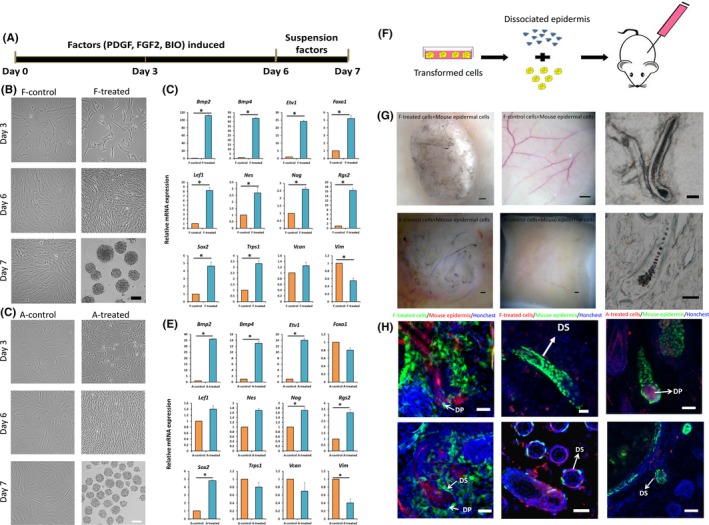Figure 1.

Chemically induced transformation of human fibroblasts to hair‐inducing DP‐like cells. A, Schematic representation of the chemically induced transformation of human fibroblasts to hair‐inducing DP‐like cells. B, Morphology changes of foetal fibroblasts and transformed cells induced by the transformation strategy represented by (A) from foetal fibroblasts. C, qRT‐PCR analysis (mean ± SD; n = 3) of DP signature genes in foetal fibroblasts and transformed cells induced by factors from foetal fibroblasts. D, Morphology changes of adult fibroblasts and transformed cells induced by the transformation strategy represented by (A) from adult fibroblasts. E, qRT‐PCR analysis (mean ± SD; n = 3) of DP signature genes in adult fibroblasts and transformed cells induced by factors from adult fibroblasts. F, Schematic diagram of hair follicle reconstruction. G, Stereo images of skin whole mounts from nude mice transplanted of newborn mouse epidermal cells combined with DP‐like cells (left) or untreated fibroblasts (middle) and the images of reconstructed hair follicle (right). H, Section staining of the reconstructed hair follicles induced with transformed cells from foetal fibroblasts (left and middle) or adult fibroblasts (right). Hoechst labels nuclei in blue. *P < 0.05, scale bar = 100 μm for (B) and (D), 300 μm for (G) and 50 μm for (H)
